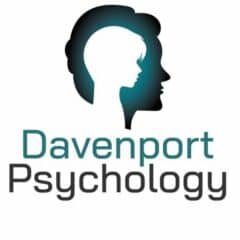Learning disorders are a range of neurological illnesses impair a person’s capacity for knowledge acquisition, processing, and retention.
These diseases can affect reading, writing, math, and language skills, which are frequently identified in children.
The most prevalent learning disorder include attention deficit/hyperactivity disorder, dyslexia, dysgraphia, dyscalculia, and dysgraphia (ADHD).
Even though these diseases can significantly affect a person’s ability to study and their everyday functioning.
Early intervention, and support can help people with learning disabilities achieve and realize their full potential.
In this article, I will discuss the types of learning disorders, their symptoms, causes, and treatments.
I will also discuss ways to assist those with learning disorders in various contexts, including the workplace, at home, and in school.
We will also talk about the difficulties and misunderstandings associated with learning disabilities and offer advice on how to deal with them.
What Is a Learning Disorder?
A learning disorder is a neurologically based processing issue that may affect a person’s capacity.
This could be in stuffs like math, reading, writing, speaking, listening, and other cognitive functions.
A learning disorder is not a learning issue brought on by visual, auditory, or motor impairments.
Nevertheless, attention deficit disorder and other neurological conditions frequently co-occur with learning impairments (ADHD).
Due to the possibility of a hereditary component, learning impairments frequently run in families.

A learning disability is a constant challenge; although kids don’t “grow out of it,” they might develop coping mechanisms.
Your kid or daughter’s academic success depends on early diagnosis, intervention, and support.
Types of Learning Disorders
There are various sorts of learning disorders, which I have listed and categorized below.
Each of these has an impact on distinct aspects of learning. These are a few examples of the most prevalent types:
Dyslexia
Learning disorders like dyslexia affect a person’s capacity to read and comprehend words, letters, and other symbols.
Dyslexia is sometimes referred to as a reading handicap or reading problem since it impairs reading comprehension.
It is by far the most frequent learning difficulty impacting between 5% And 17% of kids in the United States.
Dyscalculia
This impairs a person’s capacity to absorb arithmetic facts, comprehend numbers, do computations, and solve mathematical problems.
In the United States, between 5% and 7% of pupils are thought to have dyscalculia.
Dysgraphia
This impairs a person’s fine motor skills and writing abilities, including handwriting, typing, and spelling. Dysgraphia is thought to afflict 7 to 15 percent of students.
Non-Verbal Learning Disabilities (NLD or NVLD)
Children with NVLD may have poor coordination and trouble reading nonverbal clues like body language or facial expressions.
Strong verbal/language processing skills combined with visual-spatial processing skills can lead to this.
Challenges and Misconceptions Surrounding Learning Disorders
The stigma and misunderstandings associated with learning problems are among the most significant obstacles these people must overcome.
For instance, some individuals could erroneously think that learning disorders are brought on by laziness, a lack of drive, or imperfect parenting.
Yet, studies have demonstrated that learning difficulties are neurological in origin and are not brought on by a person’s environment or personal preferences.
Learning disorder frequently go undetected or are incorrectly diagnosed.
This prevents people from getting the assistance and accommodations they require to succeed. Frustration, worry, and low self-esteem might also result from this.
It’s crucial to educate oneself and others on learning problems, including their causes, symptoms, and therapies, to manage these difficulties. When awareness and understanding rise, stigma can be lessened.
Seeking out assistance and resources, such as tutoring, educational treatments, and assistive technology, can benefit those with learning impairments.
In addition, it’s critical for people with learning disabilities to speak up for themselves and express their needs to peers, coworkers, and teachers.
How Therapy Can Help Children Succeed in School
Therapy may be a vital tool for children with a learning disorder since it can help them acquire the skills and techniques they need to thrive in school and life.
These are a few ways counseling might be beneficial:
Identification and Diagnosis
Learning disorders that may have gone undiagnosed can be recognized and diagnosed with the aid of a therapist.
If a youngster is having difficulty in school and their problems have not been adequately diagnosed, this can be especially useful.
Skill Building
The skills kids need to thrive in school, such as organization, time management, and study techniques, can be developed via therapy.
Also, a therapist can help the youngster with specific academic abilities like reading or arithmetic.
Emotional Support
Kids with learning disorders could suffer from poor self-esteem, frustration, or loneliness.
However, children may express their feelings and work through problems in therapy’s safe and encouraging atmosphere.
Family Support
Parents and other adults who care for children with learning disorders may find help in therapy.
This may entail measures for addressing the child’s emotional and intellectual needs and information about their condition.
Advocacy
A therapist can support the child’s needs in the educational system by, for example, asking adjustments or changes to the child’s lesson plan.
Children with a learning disorder can benefit significantly from treatment.
It can provide them with the tools, support, and encouragement they need to thrive in school and beyond.
Therefore, it’s critical to seek expert assistance and help as soon as you believe your child may have a learning impairment.
What Tips Are Best for Dealing with Your Child’s Learning Disability
First, I want you to understand that learning disorders can be overcome. Recognize that you are not alone in facing challenges.

Your responsibility as a parent is to show your child how to overcome those challenges without getting depressed or overwhelmed.
Between, don’t allow the unending paperwork, bureaucracy, and testing to keep you from providing your kid the emotional and moral support they need.
1. Be an advocate for your child
To get your child particular help, you should speak out repeatedly. Work on your communication skills while embracing your position as a proactive parent.
Nevertheless, it could seem complicated at times, you can help your child greatly by keeping composed, rational, and firm.
2. Remember that your influence outweighs all others
In case you don’t know, kids are moved by what they see. Your kid will imitate your actions.
Your child is more likely to adopt your viewpoint if you tackle learning hurdles with optimism, diligence, and humor.
Furthermore, you have to put all your effort into figuring out what works for your child and doing your best to apply it.
3. Focus on strengths, not just weaknesses
Your child’s learning problem does not characterize them. There are many more areas of strength than weaknesses, with a learning handicap being only one.
Conclusion
Children with learning disorders benefit greatly from therapy if they want to succeed in school and life.
Therapists may assist kids in gaining the knowledge, self-assurance, and support they need to overcome obstacles and achieve their objectives.
Getting professional support and assistance is critical if you believe your kid may have a learning disorder.
Your kid can engage with a licensed therapist or educational expert to identify their strengths and problems.
Remember that learning disorders do not indicate IQ or moral character.
With the correct assistance and tools, children with a learning disorder may reach their full potential.


